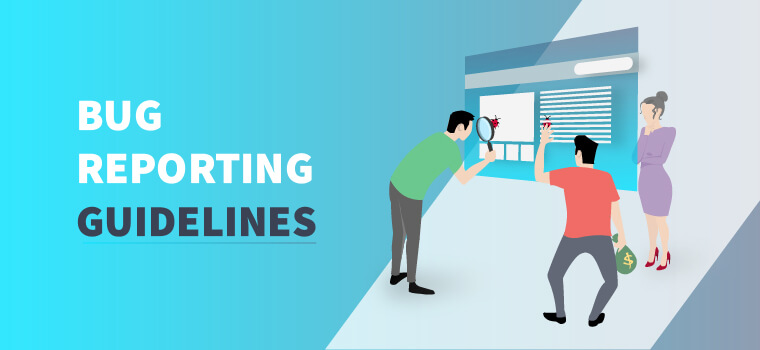Introduction to Accessibility Testing
Accessibility testing is a type of product testing that ensures a more inclusive experience by assuring quality of disabled-friendly features. Hearing impairment, blindness, differently abled (of any kind), are examples of these disabilities.

These individuals are the product’s users, and they cannot be disregarded, as many laws imply. The term “accessibility testing” refers to a subset of usability testing. Your team can verify that all information within your web application is accessible to everybody without obstacles by including various types of accessibility testing into your QA methods.
Accessibility testing technologies, such as speech recognition software, screen reader software, screen magnification software, and special keyboards, are frequently used by testing teams to guarantee that their apps are compatible with assistive technology. The production team ensures that the web/mobile application is properly equipped with features that support physically disabled people in order to make the content widely accessible and reachable; this is done by incorporating multiple segments of accessibility testing into the testing and QA practises.
The team uses various testing tools to ensure that applications are properly covered by physically challenged people by checking the product’s compatibility with speech recognition software, screen magnification, special keyboards, screen reader feature, assistive technology, screen inversion feature, and other accessibility features.In this section, we will discuss certain APIs that aid in the support of assistive technology features used by individuals with impairments.• Speech Recognition Software: This type of software is used to turn spoken words into text. It acts as the computer’s or mobile device’s input.
- Screen reader software: This software is used to read aloud the text that is written or displayed on the screen.
- Screen Magnification Software: This software is used to magnify the screen and make it easier for visually impaired persons to read text.
- Special keyboards: These are keyboards that assist people with motor control issues by giving simple typing solutions.
Why do Accessibility Testing
When we gather information about functional testing, beta testing, usability testing, and other forms, we tend to focus on the user base where functions are suggested based on product demands, however the requirement for accessibility is to understand the needs of a specific segment of the user base while also satisfying some legal standards in various countries.
- Reason 1: Expanding the market to differently abled users. If a software product is made disability friendly, it can cater to this large market, and its database and market will be expanded. And the accessibility features, as well as their subsequent testing, ensure that the business can continue to address this issue.
- Reason 2: Meeting the Accessibility Legislations
Testing for accessibility isn’t simply a nice-to-have best practise; it’s required by law. The government is committed to ensuring that all technologies, including web-based and mobile apps, are accessible to all citizens. Access to disabled individuals is not only a social practise, but it is also a legal need. Governments ensure that these groups of individuals have access to the latest technology through regulation, and product makers adhere to the procedure of offering web/mobile application accessibility to these groups as well.
Let’s have a look at some of these laws:
The Rights Of Persons With Disabilities Act, 2016 in India: This is an updated version of the 1995 PWD Act. Several items in Chapter 8 of RPWD 2016 state that individuals with disabilities should have access to various technologies (information and communication), services, and other infrastructure.
Section III of the Americans with Disabilities Act: This law mandates that domains such as organisations, schools, and public infrastructure be accessible to all members of society, including web/mobile-based technologies.
Title II of the ADA of America: mandates that all services, programmes, and activities implemented by the federal or state governments be accessible to all people living in the United States. It, too, covers all information technology-based products, as do others.
The Rehabilitation Act of 1973, Sections 504 and 508: Section 504 mandates that reasonable accommodations be made for physically challenged people in educational and learning institutions, organisations, and the workplace. Section 508 specifies the conditions that these institutions must meet in order to make technology accessible to all people.
The Web Content Accessibility Guidelines (WCAG): Such protocols provide the accessibility testing examples and recommend various and vital accessibility testing types to make the development and QA teams track down the methods through which the applications’ accessibility can be enhanced. There are four main principles WCAG recommends:
The Web Content Accessibility Guidelines (WCAG) are a set of guidelines that describe how to make web content more accessible. Such protocols include accessibility testing examples and recommend diverse and important accessibility testing kinds to help development and QA teams find ways to improve the accessibility of their apps. The WCAG suggests four main principles:
- Perceivable: The user should be able to grasp the displayed information and how to use the application’s UI.
- Operable: There should be no barriers or challenges encountered while using the application and its User Interface components.
- Understandable: All users can comprehend the information displayed and comprehend the meaning of the information provided by the programme.
- Robust: Including assistive technologies in the application.
What should Accessibility testing address?
Here are the four major categories of disabilities that should be addressed during accessibility testing in order to improve the application’s accessibility features. The test cases should demonstrate that the software can deliver a consistent experience to users with specific disabilities.
- Vision: This includes blindness, colour blindness, and vision impairment, all of which make watching movies or reading words on a screen difficult.
- Hearing: People who have trouble hearing the device’s data.
- Mobility: When a user’s motor function is impaired, bodily actions such as typing or using a mouse can be challenging.
- Cognitive: When the user is having trouble identifying, focusing, or making decisions.
Strategies to Accessibility testing
- Accessibility testing can be done in two ways: manually or automatically.The following are the points that must be ticked in order for all users to use the programme. For signing off on accessibility testing, follow this checklist.Is there a keyboard equivalent for all mouse operations and windows in an application?
- Are there instructions included in the user guide or manual? Is the documentation helpful in understanding and operating the application?
- Are tabs logically placed to facilitate easy navigation?
- Are there any shortcut keys for menus?
- Is the application compatible with all operating systems?
- Is the response time of each screen or page clearly stated so that End Users are aware of how long they will have to wait?
- Have you double-checked that all of the labels in the application are correct?
- Is the application’s colour customizable for all users?
- Are graphics or icons used appropriately so that end users can understand them?
- Does an app have audio alerts?
- Is it possible for a user to change the audio or video settings?
- Is it possible for a user to change the default typefaces for printing and text displays?
- Is it possible for the user to alter or turn off flashing, rotating, or moving displays?
- Double-check that color-coding is never employed as the sole method of transmitting information or signaling a course of action.
- Can inverted colours be seen with highlighting? Changing the contrast ratio in the app allows for colour testing.
- Are people with disabilities able to understand audio and video content? All multimedia pages on websites should be tested without speakers.
- Whether users with impairments are provided with training to help them become familiar with the software
.Since testers are inexperienced with disabilities, accessibility testing can be difficult for them. Working with disabled people who have unique requirements allows you to better comprehend their difficulties.
Depending on the disability, there are various methods for determining accessibility. We’ll go over each one one by one.
Types of Accessibility Testing Tools
There are a number of tools that can be used to check an application’s accessibility in order to make it more acceptable and user friendly, as well as to offer quick results.
Let’s have a look at some of the most popular tools:
- Wave is a free suite created by WebAIM that assists teams in manually validating web pages for many characteristics and making their content more accessible for physically challenged people. This programme can be used to examine intranet-based, dynamically produced password-protected, or sensitive web pages. Its main features include identifying web page components, providing alternate ways to view web pages, allowing the usage of third-party apps, and ensuring 98 percent secure and confidential accessible reporting.
- TAW: This is yet another useful tool for determining the website’s or web page’s accessibility. This tool analyses and displays website accessibility concerns and reports in accordance with the W3C web accessibility rules. Priority 1, priority 2, and priority 3 are the three levels of importance assigned to issues. By “spidering” the site, we can test a single page or numerous pages with this tool. It also defines additional tests with the help of the “User Checking” dialogue box.
- Developer tools is a Google Chrome extension. It performs an audit of the accessibility features and ensures that web pages follow the accessibility guidelines.
- Webanywhere: This is a screen reader tool that works similarly to Jaws and assists users in reading web pages.
- Adesigner: Developed by IBM, this programme provides a simulation that assists designers in understanding the needs of visually impaired persons in order to develop websites that are accessible to them.
Conclusion
In software engineering, accessibility testing aids in making your programme accessible to people with disabilities. If implementing accessibility rules is impossible due to the complexity of your web application, create two versions of the website: one for normal users and one for disabled users.






